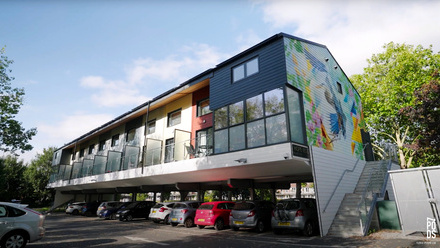Harnessing data for a sustainable built environment
From minimising carbon, energy, and water use to sourcing ethically produced materials and ensuring long-term resilience, every specification decision has a lasting impact. The challenge is clear: the industry must innovate, embrace data-driven approaches, and prioritise transparency to build smarter, cleaner, and more future-ready spaces.
Research from the Treasury and the Green Construction Board highlights that the most significant carbon reduction opportunities occur in the early design and planning stages where strategic choices can yield lasting environmental benefits. As a result, specifiers and design teams must have access to high-quality, reliable data to drive lower-carbon outcomes.
The demand for detailed product information continues to grow, underscoring the need for data-driven decision-making in architectural practise. During the initial design phases – including concept development and spatial planning – specifiers must consider the full lifecycle costs of materials, systems, and the building itself. While some sustainable choices may come with higher upfront costs, they often lead to long-term efficiencies and savings.
Digital tools present invaluable opportunities for assessing whole-life impacts during specification. By leveraging these resources, designers can make well-informed, sustainable choices by using comprehensive, accredited product databases. This ensures that materials and systems are selected with both performance and environmental impact in mind.
With sustainability at the forefront of architectural decision-making, the quality of specifications plays a crucial role in ensuring projects meet environmental and performance targets. To support this, NBS has introduced The Best Practice Guide to Specification Writing, a free framework designed to standardise and improve specification writing across the sector. Developed in collaboration with leading industry professionals, this guide addresses common pain points to enhance consistency and quality across practices and contractor-led projects, serving as a resource for professionals at all stages of their careers, whether they are new to specification writing or experienced specifiers refining their approach.
Sustainable construction is inherently collaborative, requiring input from multiple stakeholders. As digital tools become more widely adopted, every participant in the design and construction process has a role to play in achieving sustainability targets. In particular, manufacturers can contribute by providing detailed, digitally accessible data about the environmental attributes of their products. This transparency empowers specifiers to make informed decisions that reduce a project's carbon footprint.
But a significant challenge remains: many environmental claims lack independent verification. To ensure credibility, manufacturers should consider supplying Environmental Product Declarations (EPDs) – third-party certified documents that provide clear, verifiable data on a product's lifecycle impact. These declarations equip specifiers with the trusted performance metrics necessary to make sustainable choices with confidence.
With the built environment responsible for around 40% of global emissions, designers and specifiers must lead the charge toward sustainability. Digital tools and comprehensive product data will be fundamental in achieving these goals, helping professionals reduce carbon emissions while still ensuring compliance with other evolving regulations such as the Future Homes Standard, the Building Safety Act, and the Fire Safety Act.
The advantages of embracing digital capabilities are clear. Accurate, accessible data allows specifiers to navigate complex regulatory landscapes while driving sustainable and resilient architectural solutions.





